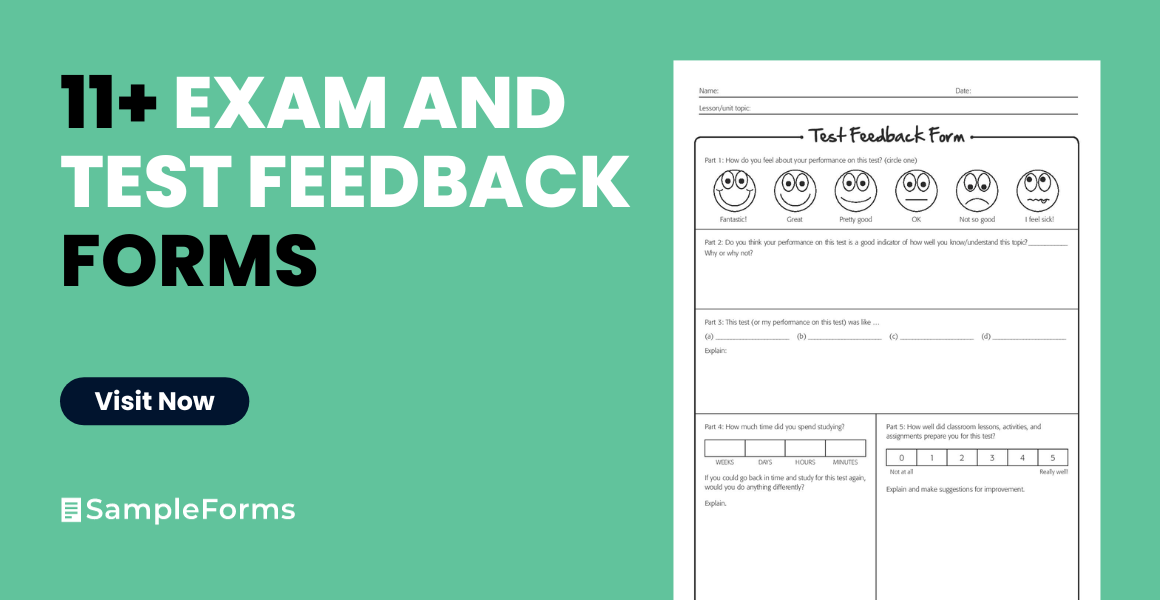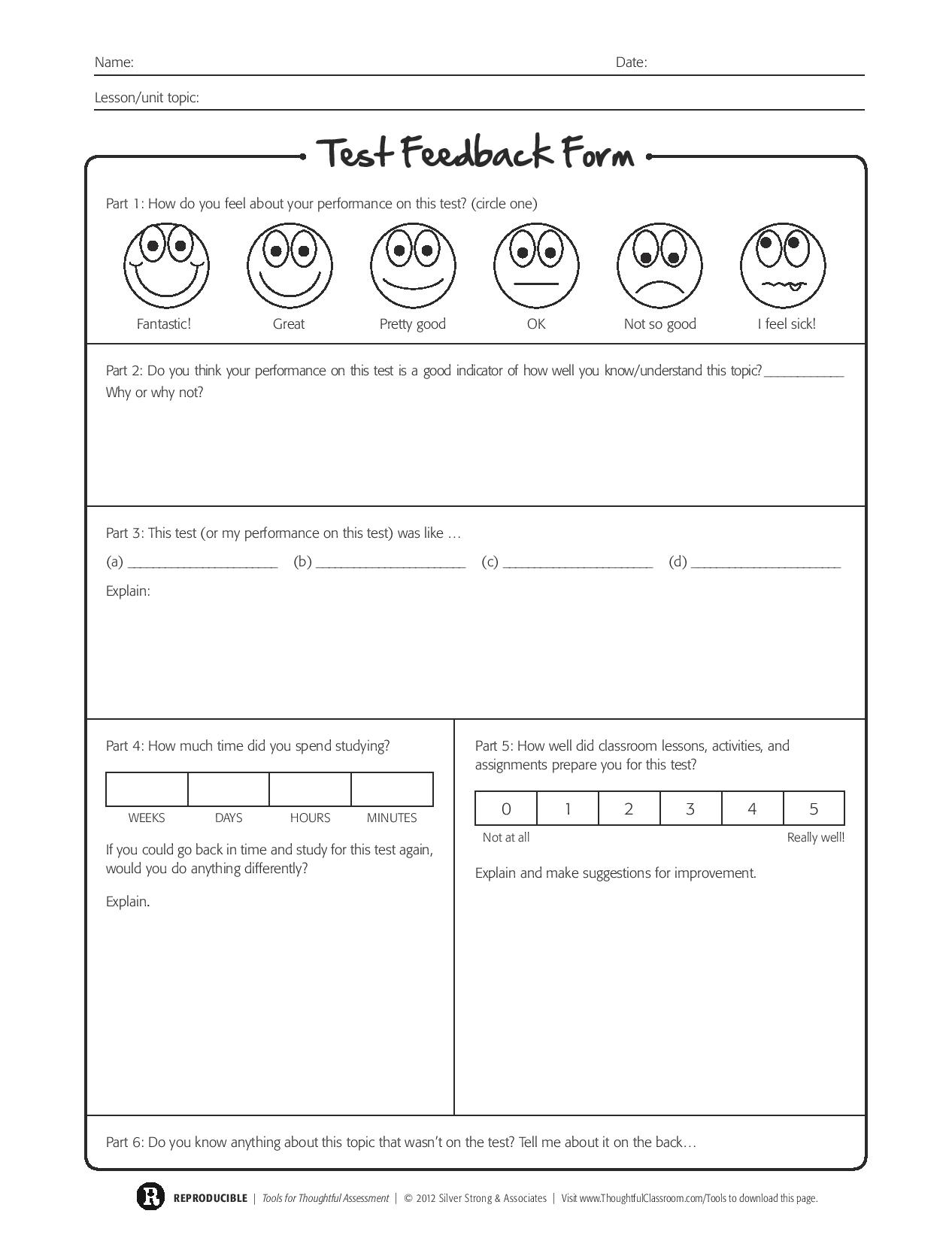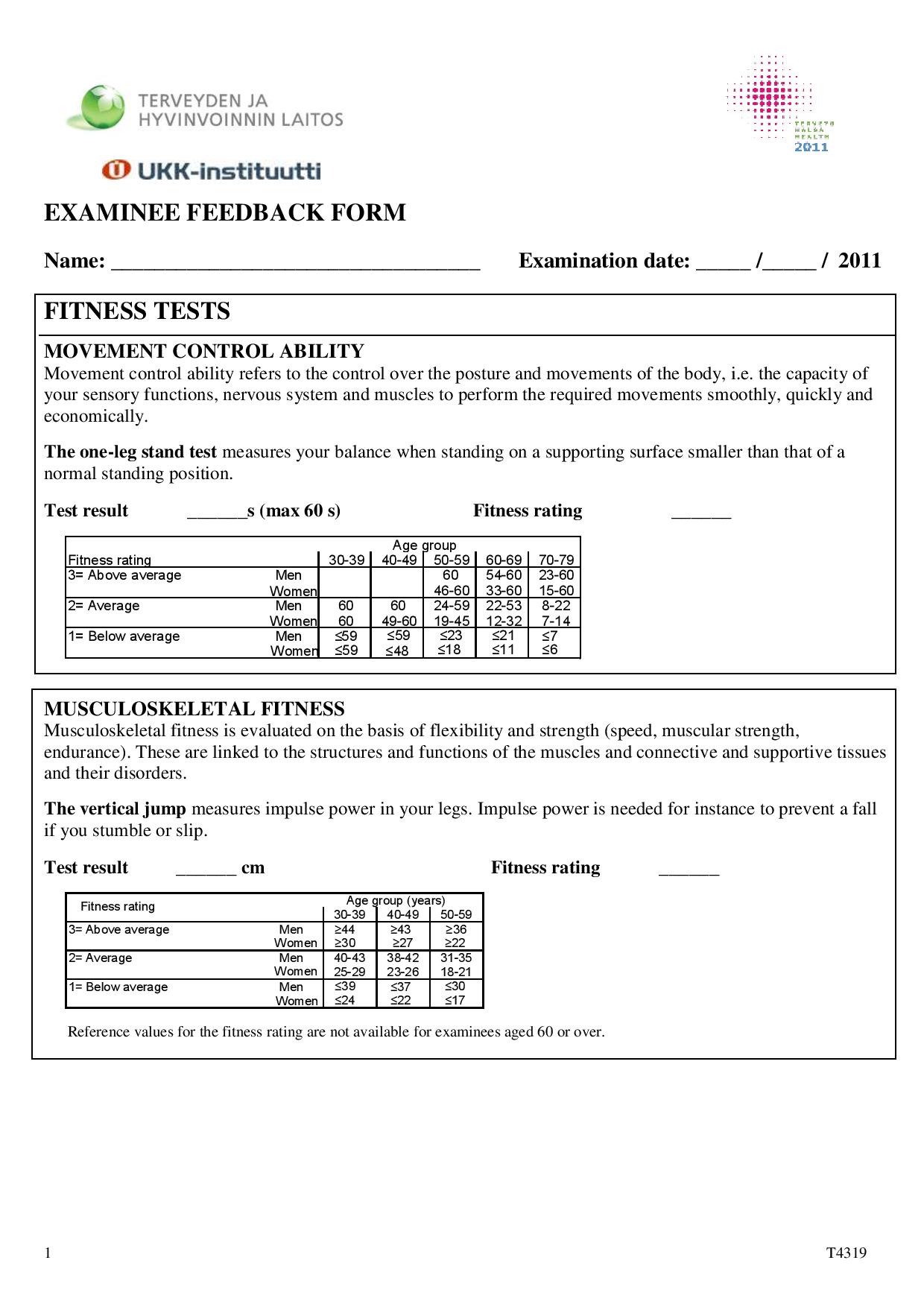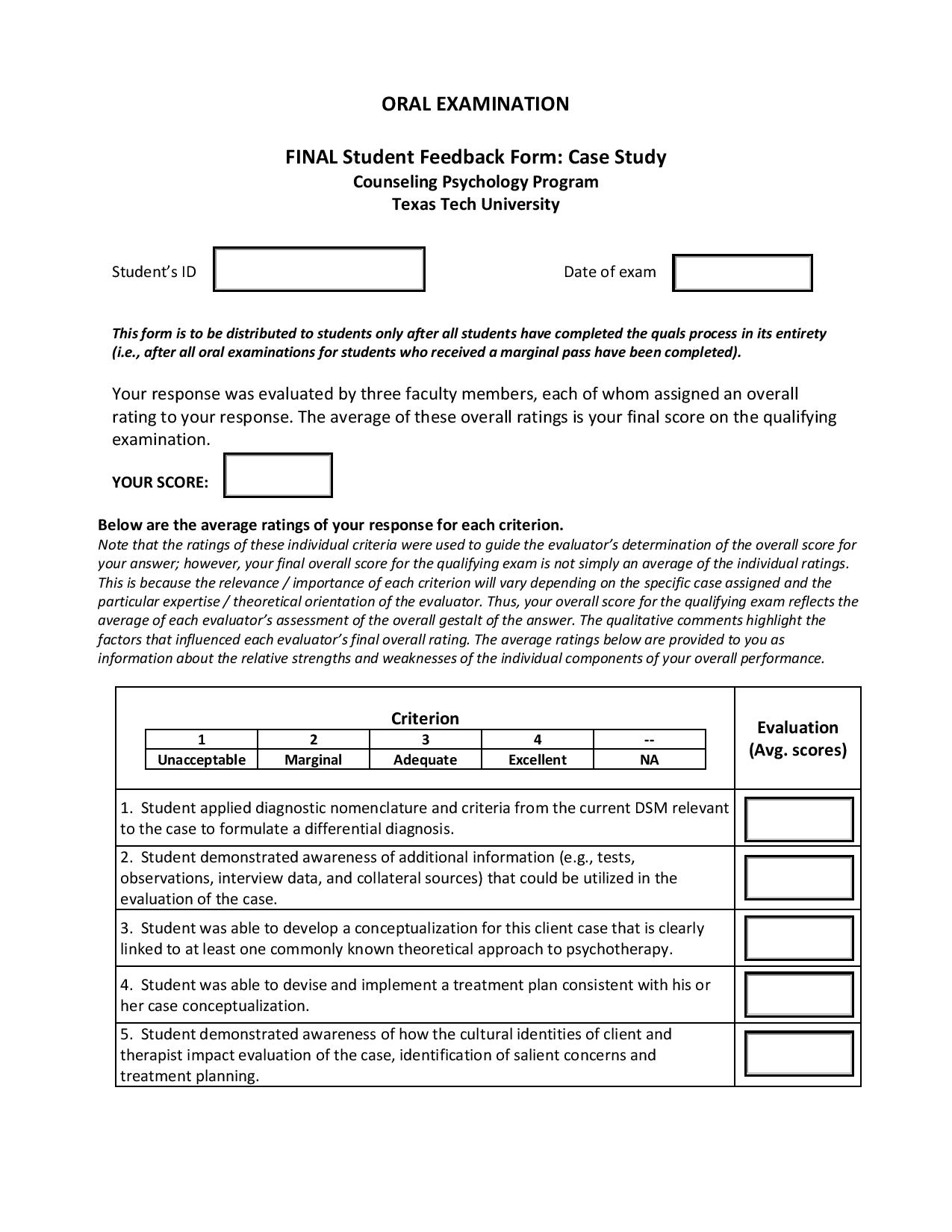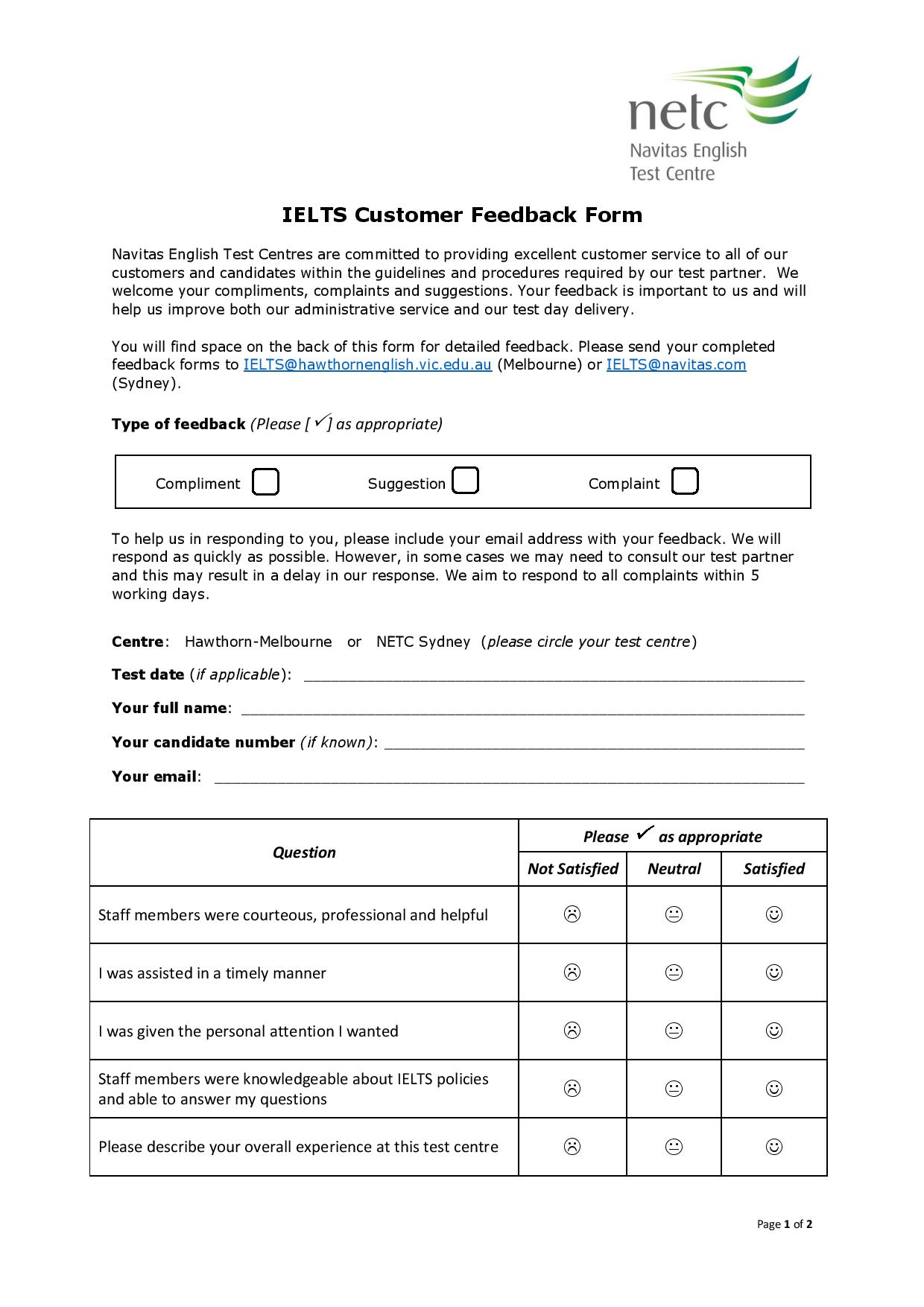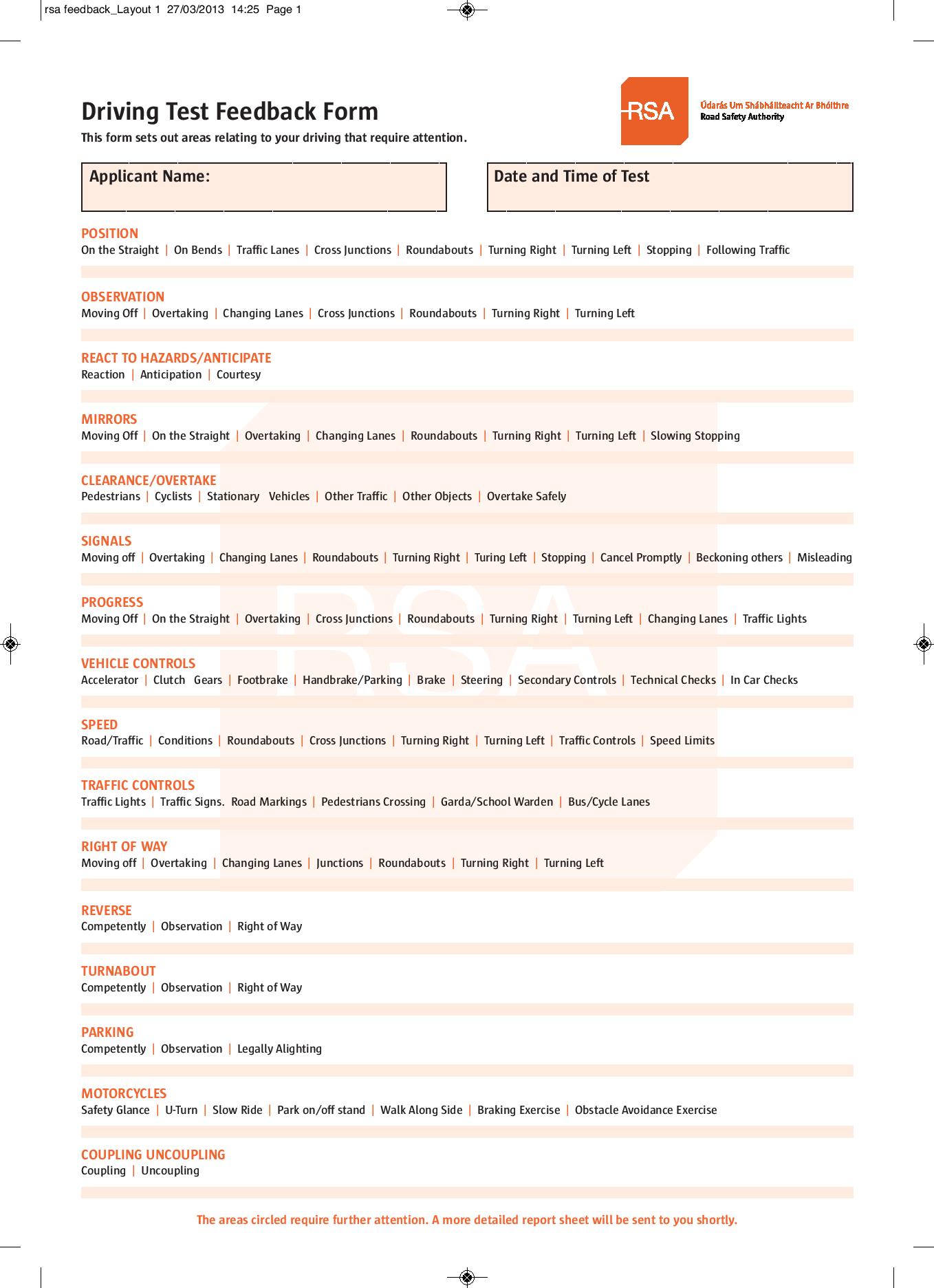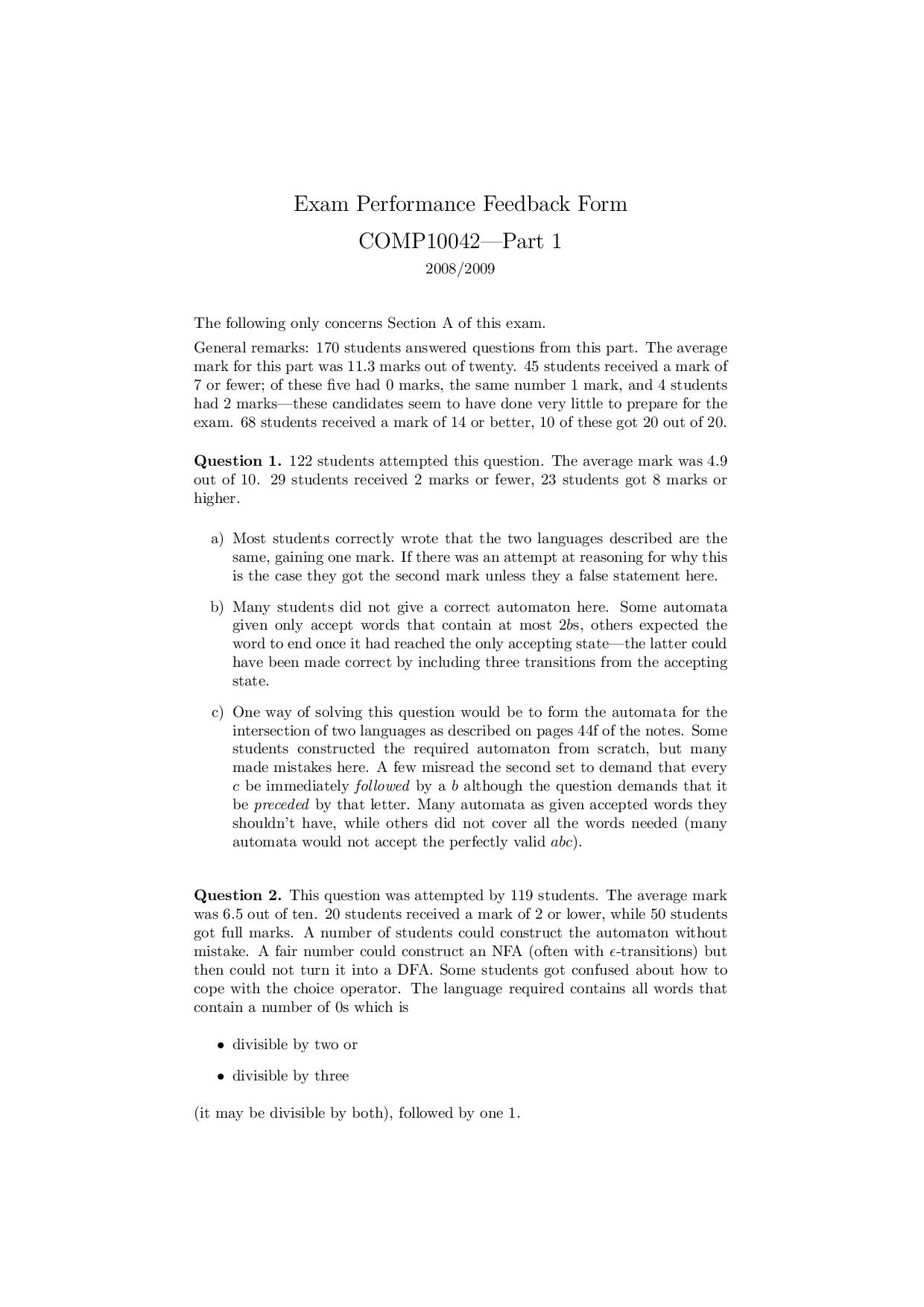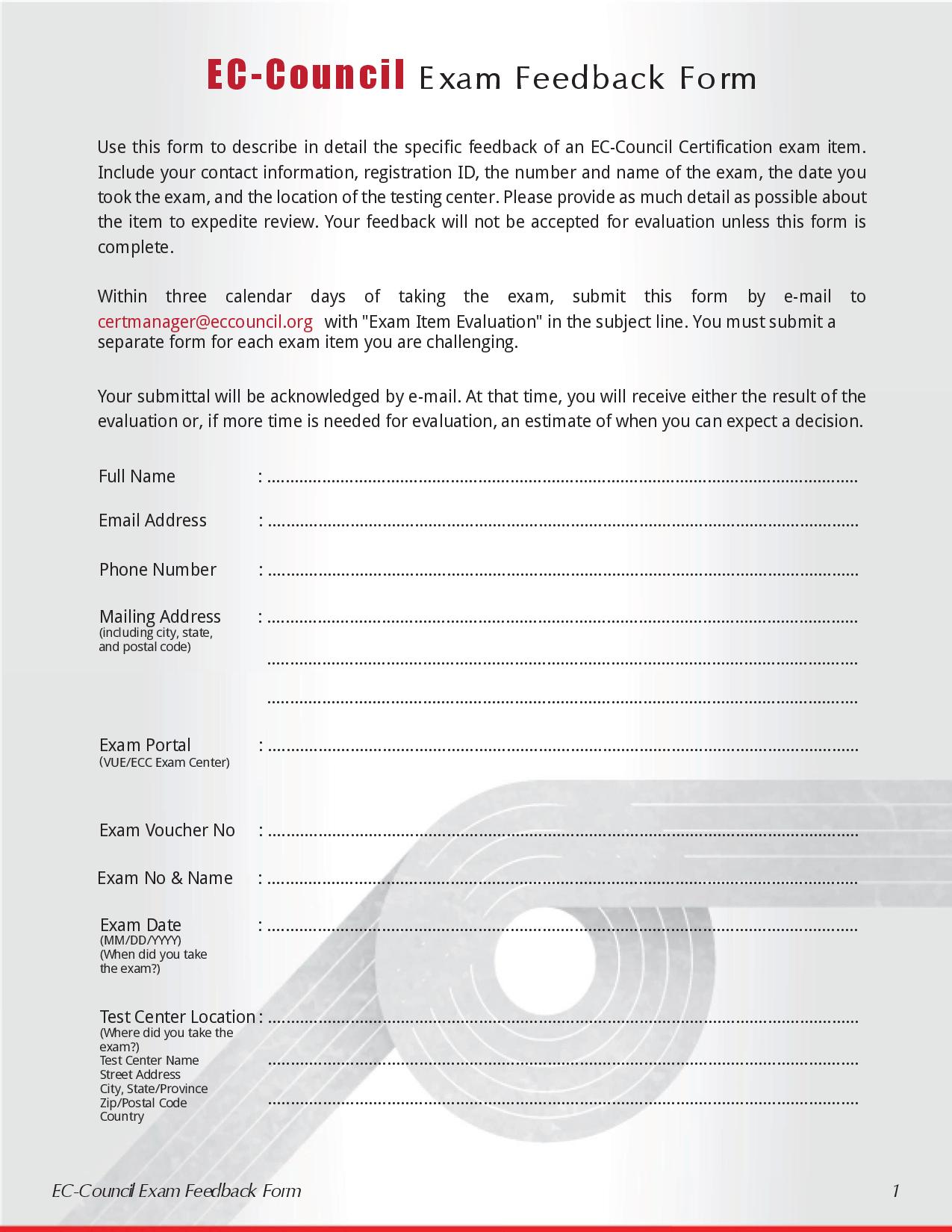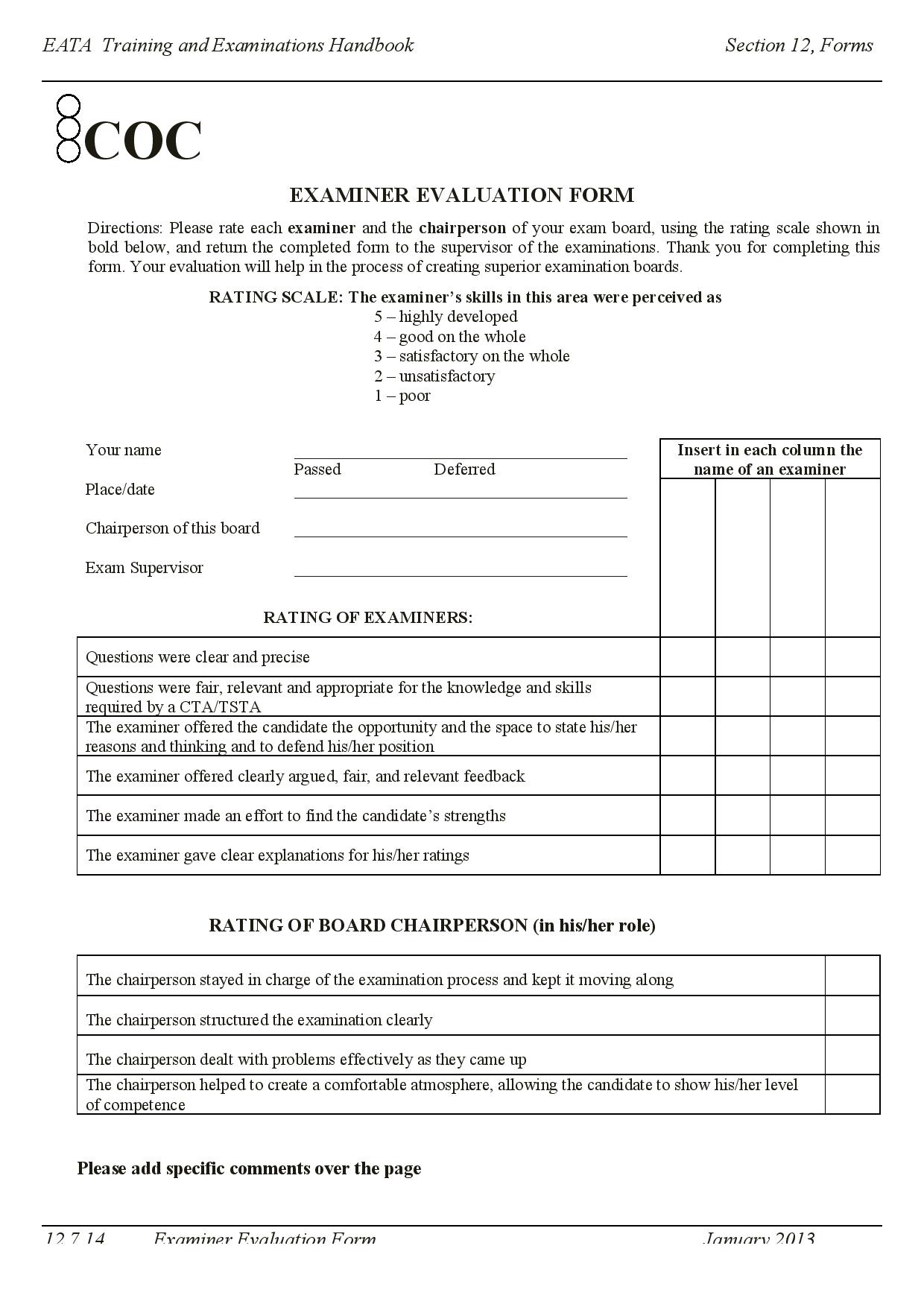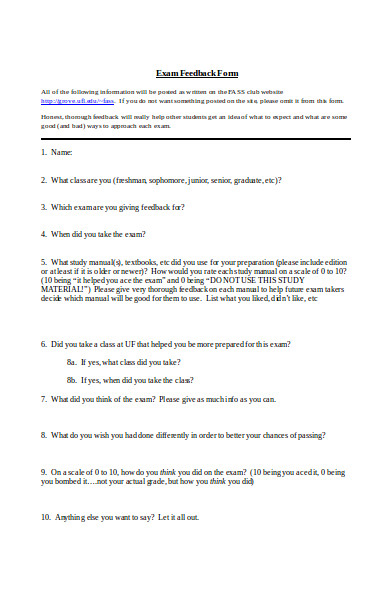The key to ensuring quality feedback is by giving someone the information they need by presenting it in a way that will help that person develop and improve. With the right kind of feedback, whoever receives it will know what to do in order to reach certain goals as well as attain success.
It’s not important to learn how to give feedback, one must also learn how to receive it as well. By learning how to receive productive feedback, one can gauge his or her own strengths and weaknesses, allowing that person to see what should remain and consistent as well as what parts would need to change, improve, or be removed.
Test Feedback Form
Fitness Test Feedback Form
Oral Examination Feedback Form
What are Exam and Test Feedback Forms?
These type of feedback forms can be used in one of two ways. It can be used by a student to provide feedback based on the type of test that he or she took up, or it could be used by the teacher to hand out feedback based on the performance of how one took a particular test.
With these types of feedback forms, one can see how a person felt regarding the usefulness of any test or exam answered and to see if these people have any comments. It will also help the people who answered by providing them with feedback that could tell them what mistakes they made as well so that they’ll know what to fix for better future test and exam results in the future.
How to Ensure Students Benefit from Test and Exam Feedback
Exams and tests are one of the best ways to appraise the performance of a student. And once you get their results, you will then need to provide the necessary feedback. So in order for these students to understand and make use of whatever feedback they obtain, you will need to make sure that the feedback is:
- Purposeful. You’ll need to explain to the student about the purpose of the exam that he or she took up. Will it be used to determine the student’s skill level? Will it be used as a comparison to the results of others? Will the results be used for future tests and exams? Allowing the student to understand the purpose of the feedback will tell them what they should expect as well as what actions they should take to meet the expectations of their instructors.
- Consistent. Whatever standards you have, you’ll have to make sure that it’s consistent all throughout the course. This may be difficult considering that grading standards could also depend on how hard the course is, but you’ll need to try and maintain a proper grading average to ensure the students know what they have to aim for. So it’s always best to discuss with the students during the very beginning of the course about your grading standards by using a rubric.
- Clear. Whatever grading standards set in the course should be properly explained at the very beginning. Student evaluations must always be made known so that the students understand what their instructors would want out of them.
eThis way, they are able to make use of whatever information they are presented with and gain the knowledge and develop the skills necessary to meet whatever their instructors expect out of them. Feedback needs to be expressed clearly, telling the students which part of the exam they got wrong, why they got it wrong, and how to correct whatever mistakes they have made.
Test Day Feedback Form
IELTS Feedback Form
Driving Test Feedback Form
How to Prepare a Rubric that Will Help You Provide Feedback on an Exam
Preparing a rubric ahead of time will you allow you to do a proper student assessment. You’ll be able to think about the different alternatives on how student will answer certain questions, as well as allowing you to verify if they’re testing the material you want them to test on. So here are a few ways that will help you prepare a rubric for any exam:
- Look at how other instructors are creating their rubrics. There’s a big possibility that you are not the only person that’s teaching your course. It’s best that you observe how other teachers in a similar course as to how they’re assigning their grades
- Give marks that are consequential. This means that you should not be penalizing the same error repeatedly. If an error is made but is carried through by the answer, then it’s best to only penalize it once if the rest of the answer is sound.
- After you have made the exam, you will need to go over the questions and look at your answer key. There might be a possibility wherein the students could interpret your questions in a way that’s different from what you originally intended. There could be times where students hand out answers that may be different but are excellent in a way that answers the question perfectly. You will need to consider giving these answers a partial or full mark.
- When marking the exams of your students, place down notes. The notes should be clear as to why you gave the student a passing or failing mark. If an exam is to be returned to the students, then whatever notes you place in could help them understand what kind of mistakes they have made and teach them what to do in order to correct them. This will also help the students evaluate their performance and/or help them review the results of the exam for when they need to clarify certain things.
Remember these should you decide to make any kind of rubric for your exam. With this, you’ll be able to provide feedback that will help your students develop into ones that will achieve success in the course that they are taking.
Exam Performance Feedback Form
Exam Feedback Questions Form
Exam Feedback Form
Examiner Evaluation Feedback Form
Blank Exam Feedback form
The Four Schemes to Provide Feedback on Student Examination Performance.
With this, one is able to provide effective feedback that can easily determine the level of performance a student has shown in whatever test or exam that he or she takes. With these four schemes, instructors will be able to do provide simple feedback that will meet the needs of the different students. So here are the four schemes:
- Students should be invited to sessions where they will get the opportunity to view the type of exam they are about to take. This way they are able to understand more about how they are going to be graded. They may also ask questions that can grant them a further explanation on certain questions that they cannot answer. These types of viewing sessions should have the students sign an agreement wherein they are not to write, remove, or take pictures of any of the exam papers that they are allowed to view.
- Generic assessment feedback should be written regarding one’s overall performance on any exam paper. This is so students can see where they are and where the others are in terms of academic performance. Students will be able to gather information relating to all of their strengths and weaknesses which will allow them to work harder for better marks. This kind of feedback can also be given via lecture sessions where a student can gather more information on the mistakes he or she has made and how to fix them.
- Tutors can also be provided with the results of the generic assessment for exams where they can discuss with their tutees about the results. Students with personal tutors are able to gain more information from them as these tutors cater to the specific needs of the students that they are teaching.
So by gaining the information based on the feedback of whatever exam the student undertook, the tutor will be able to develop an action plan that will help the student understand what he or she did wrong. This way, the student will be able to figure out mistakes easier and hopefully learn from them.
- One can provide a generic checkbox template at the end of every complete question. This is mostly applicable to students who are answering essays. While understanding the answer the student has provided in the essay, the instructor marking the exam can fill in the checkbox showing what grade the student received for his or her answer. This kind of template could take the form out of five or six features of the essay, and each of them would be scored on a five point scale.
One also has the option of mixing up these schemes that best suits whatever exam they’re handing out to the students. All one has to remember is that providing feedback to the students depends entirely on how that person is going to give it.
Providing the right kind of feedback will help the student grow into someone that will achieve academic success, and providing the wrong one could just result in the student underperform. If you would like to learn more about how to provide feedback for tests that students take part in, then you can through any of our student feedback forms in PDF that specifically aim to help you provide the exam or test feedback they need to meet academic expectations.
Related Posts
-
Restaurant Feedback Form
-
Parent Feedback Form
-
FREE 32+ Different Formats for Feedback Forms in PDF | Ms Word | Excel
-
FREE 11+ Property Feedback Forms in PDF | Ms word
-
FREE 11+ Observational Feedback Forms in PDF | MS Word
-
Nursing Feedback Form
-
Form for 360 Degree Feedback
-
FREE 10+ Feedback Forms Aimed at Doctors | PDF
-
FREE 11+ Demo Feedback Forms in PDF | MS Word
-
FREE 10+ Medical Feedback Forms in PDF
-
Induction Feedback Form
-
Coaching Feedback Form
-
FREE 12+ Forms for Job Application in PDF | MS Word | Excel
-
FREE 10+ Feedback Forms for Lessons in PDF | MS Word
-
FREE 9+ Feedback Forms for Clients in PDF | Ms Word | Excel
